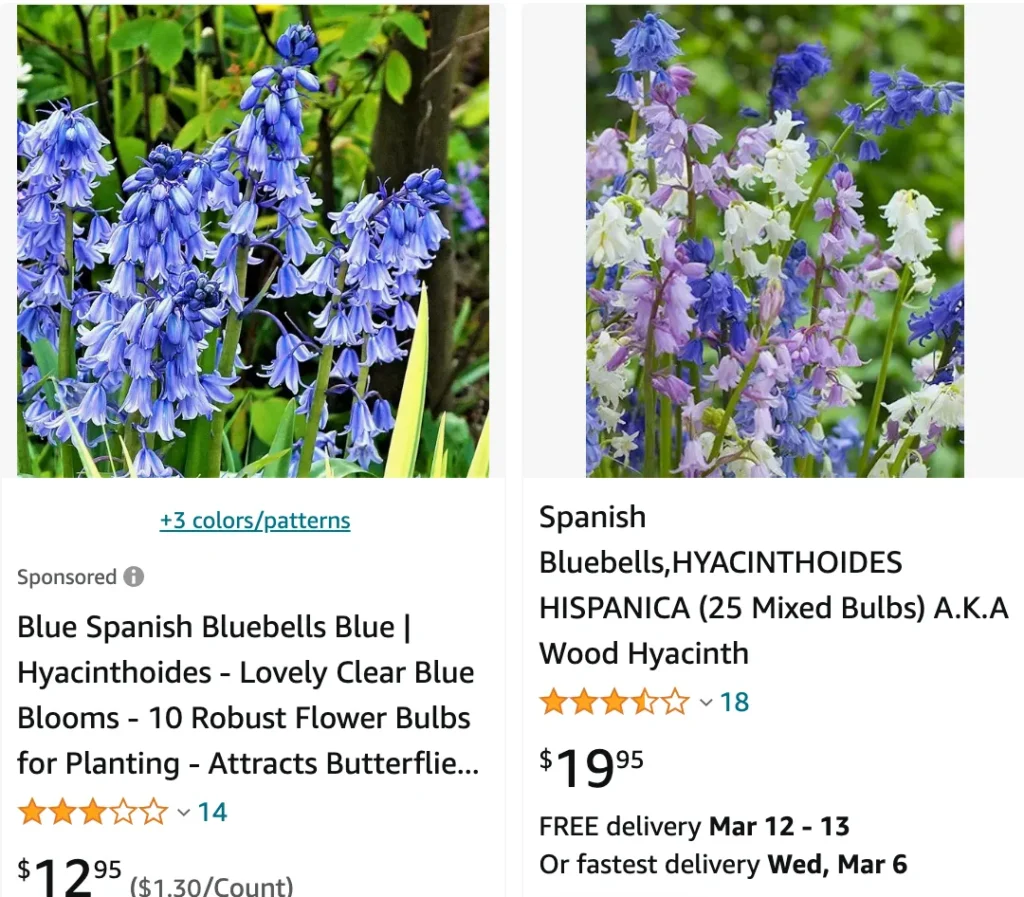Unveiling the Bluebell Symphony
As I wander through the tapestry of my garden, one genus never fails to captivate me — Hyacinthoides. The very name resonates with the enchanting allure of bell-shaped blooms, and my journey with these exquisite flowers has been nothing short of a personal odyssey. Join me as I delve into the realms of Hyacinthoides, exploring its diverse species and sharing the tales of my own encounters with these botanical wonders.
The Botanical Ballet: Hyacinthoides Unveiled
A Dance of Classification
In the grandeur of the plant kingdom, it finds its place in the subfamily Scilloideae, nestled within the family Asparagaceae. This classification, once part of the separate Hyacinthaceae family, distinguishes Hyacinthoides from its botanical companions, such as Scilla and Ornithogalum. What sets it apart is the elegant presence of two bracts at the base of each flower, a signature feature that beckons admiration.
A Mosaic of Species
As I navigate the vast landscape of Hyacinthoides, I discover a palette of 11 distinct species and one interspecific hybrid. The majority of these floral gems grace the Mediterranean Basin, with one outlier, Hyacinthoides non-scripta, casting its bloom further north in the woodlands of north-western Europe. Through the lens of molecular phylogenetics, these species unveil themselves in three distinct groups, each a testament to nature’s artistry.

Personal Encounters: A Chronicle of Hyacinthoides Species
H. Aristides: A Dwarf Marvel
One of my earliest rendezvous was with H. Aristides, a dwarf species adorned in hues ranging from Algeria to Tunisia. Blooming courageously in early March, it stood as a testament to resilience. Originating from an oak forest near Yakouren, Algeria, this botanical gem, in the lens of Rimmer de Vries, became a harbinger of spring.
H. Cedretorum: Peaks of Beauty
Venturing to Morocco and N. Algeria, I encountered the majestic H. Cedretorum. With revolute tepals and filaments fused in harmony, this species painted the high altitudes with its botanical prowess. Mary Sue Ittner’s lens captured not just its physicality but the essence of its existence.
H. Hispanica: The Spanish Elegance
In the sun-kissed lands of Spain and Portugal, H. Hispanica stood tall and unscented. Its bell-shaped flowers, scattered along the stem, whispered tales of elegance. The Spanish bluebell, as it is often called, danced in hues of pink, white, and blue, embodying the vibrant spirit of the Iberian Peninsula.
H. Italica: A Mediterranean Charmer
The Italian Bluebell, or H. Italica, unveiled its charm in the rocky landscapes of France, Spain, Italy, and Portugal. As I witnessed the intricate blue and purple starry flowers, I couldn’t help but be entranced by its petite yet captivating demeanor.
H. Lingulata: A Fall Symphony
As autumn embraced my garden, the small yet beautiful H. Lingulata emerged. Native to North Africa, this fall-blooming species, with its fine-haired leaves, graced my bulb frame with a delicate shade of blue. It was a testament to the diversity within the genus, each species narrating its own story.
H × Massartiana: The Garden’s Bluebell
A hybrid born of H. hispanica and H. non-scripta, H × Massartiana, adorned my garden with its vibrant ‘bluebell’ blooms. The journey from seed to flower, a testament to patience, unfolded over three years. David Pilling’s lens captured not just its blooms but the entire lifecycle, reminding me of the transient beauty of nature.
H. Mauritanica: A Dwarf Marvel Resurrected
Once considered subspecies in Scilla, H. Mauritanica showcased its blue-flowered splendor in Portugal and Morocco. Mary Sue Ittner’s lens brought to life the intricacies of its existence, a testament to the genus’s resilience across diverse landscapes.
H. non-scripta: The British Isles’ Symphony
Native to Western Europe, H. non-scripta, known as Bluebells in England and Wild Hyacinths in Scotland, graced meadows and woods. In the face of threats from climate change and hybridization, these blooms stood resilient, their white anthers distinguishing them amidst the bluebell symphony.
H. Reverchonii: Spain’s Floral Poet
From the heart of Spain, H. Reverchonii emerged with narrow leaves and loose racemes, painting a poetic picture between February and April. Mary Sue Ittner’s lens immortalized its beauty, showcasing not just the blooms but the bulbs on a 1 cm grid.
Planting the Symphony: A Gardener’s Guide
As a custodian of these botanical treasures, I’ve learned the art of planting Hyacinthoides bulbs. Choosing a well-lit spot with proper soil drainage becomes the canvas for this floral symphony. With each bulb, a mini onion of potential, I’ve orchestrated a choreography that involves a delicate dance of spikes and soil. The blooms, a testament to this meticulous planting, grace my garden every spring, offering a visual feast.
In conclusion, my journey with Hyacinthoides has been a narrative of discovery and enchantment. From the rugged landscapes of North Africa to the woodlands of the British Isles, each species has woven its unique tale into the fabric of my botanical tapestry. As I continue to nurture these blooms, I am reminded that within the petals and leaves lies not just a genus but a living chronicle of nature’s artistry. Hyacinthoides, in its myriad forms, continues to be my perennial muse, an ever-unfolding saga of floral fascination.



